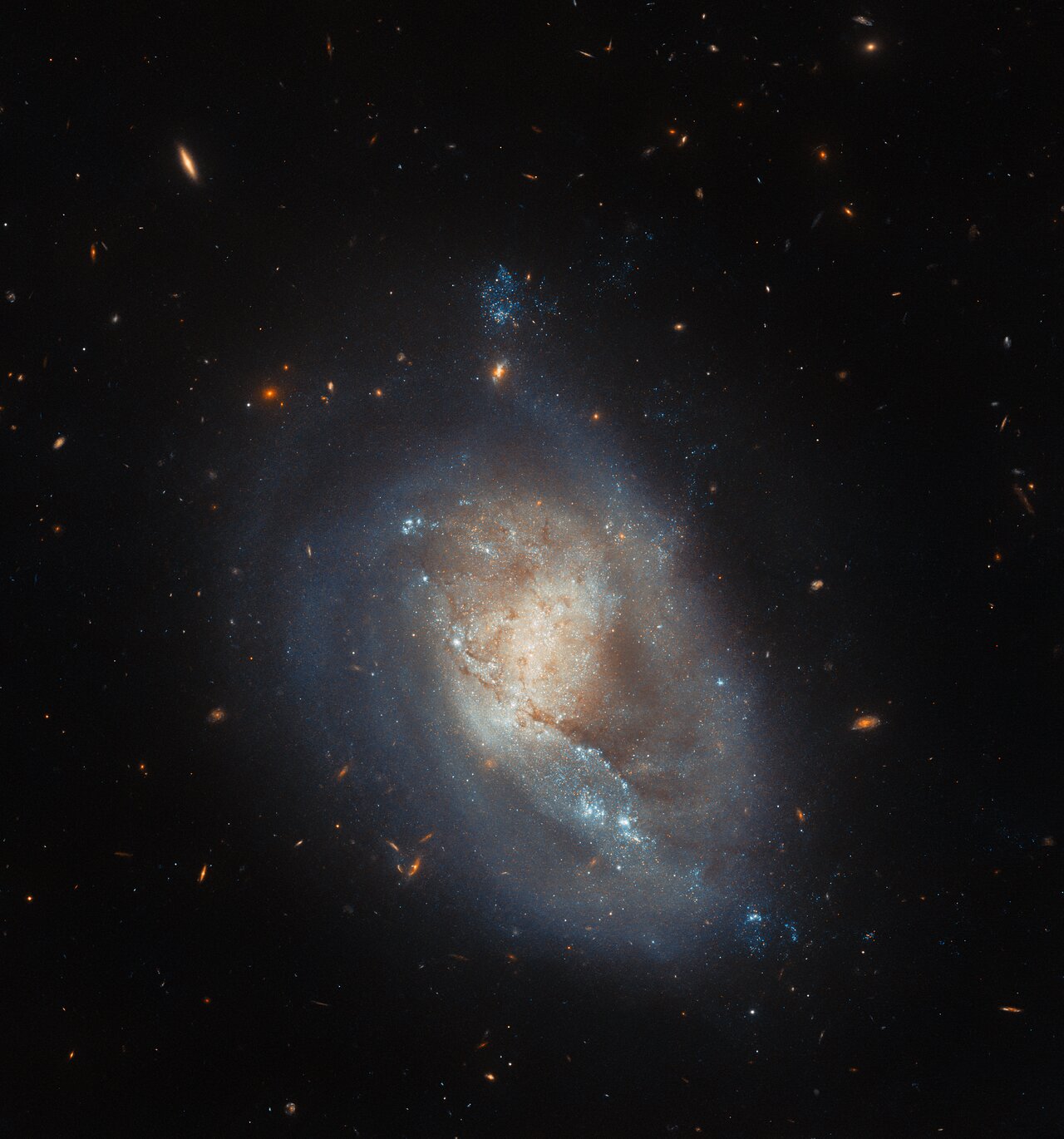Cosmos IC 3476
This image features IC 3476, a dwarf galaxy that lies about 54 million light-years from Earth in the constellation Coma Berenices. Whilst this image does not look very dramatic — if we were to anthropomorphise the galaxy, we might say it looks almost serene — the actual physical events taking place in IC 3476 are highly energetic. In fact, the little galaxy is undergoing a process known as ram pressure stripping, which is driving unusually high levels of star formation within regions of the galaxy itself. We tend to associate the letters ‘ram’ with the acronym RAM, which refers to Random Access Memory in computing. However, ram pressure has a totally distinct definition in physics: it is the pressure exerted on a body when it moves through some form of fluid, due to the overall resistance of the fluid. In the case of entire galaxies experiencing ram pressure, the galaxies are the ‘bodies’ and the intergalactic or intracluster medium (the dust and gas that permeates the space between galaxies, and for the latter the spaces between galaxies in clusters) is the ‘fluid’. Ram pressure stripping occurs when the ram pressure results in gas being stripped from the galaxy. This stripping away of gas can lead to a reduction in the level of star formation, or even its complete cessation, as gas is absolutely key to the formation of stars. However, the ram pressure can also cause other parts of the galaxy to be compressed, which can actually boost star formation. This is what seems to be taking place in IC 3476: there seems to be absolutely no star formation going on at the edge of the galaxy bearing the brunt of the ram pressure stripping, but then star formation rates within deeper regions of the galaxy seem to be markedly above the average.
